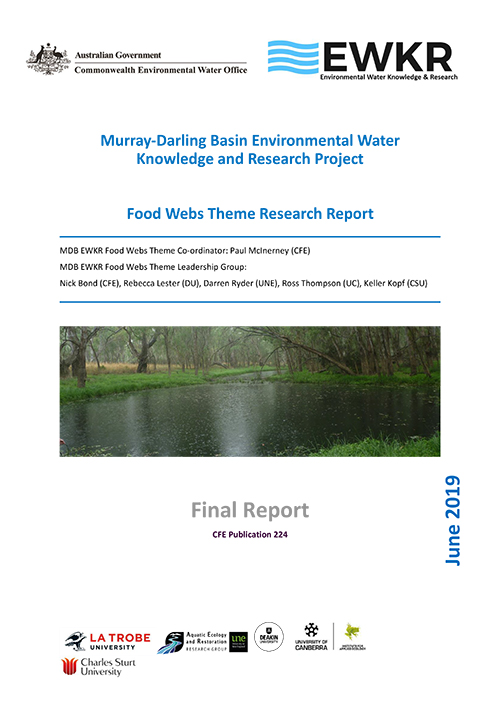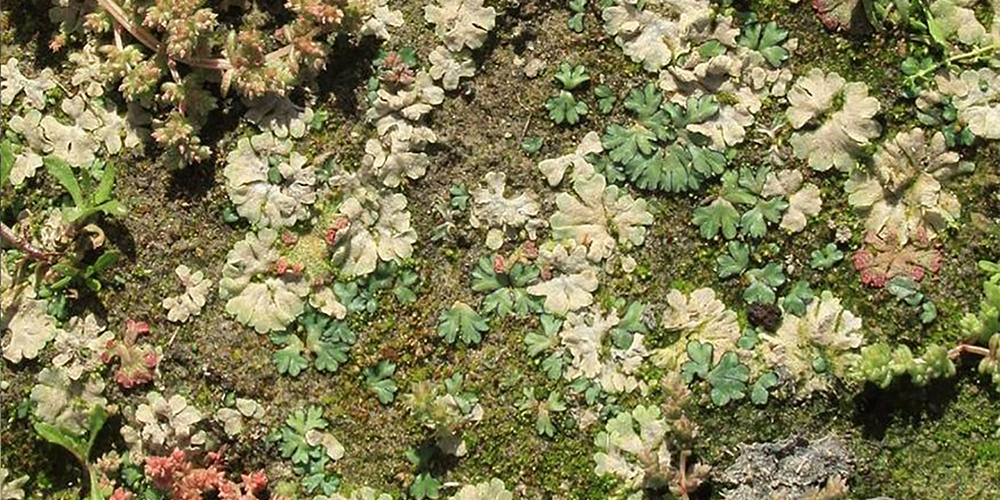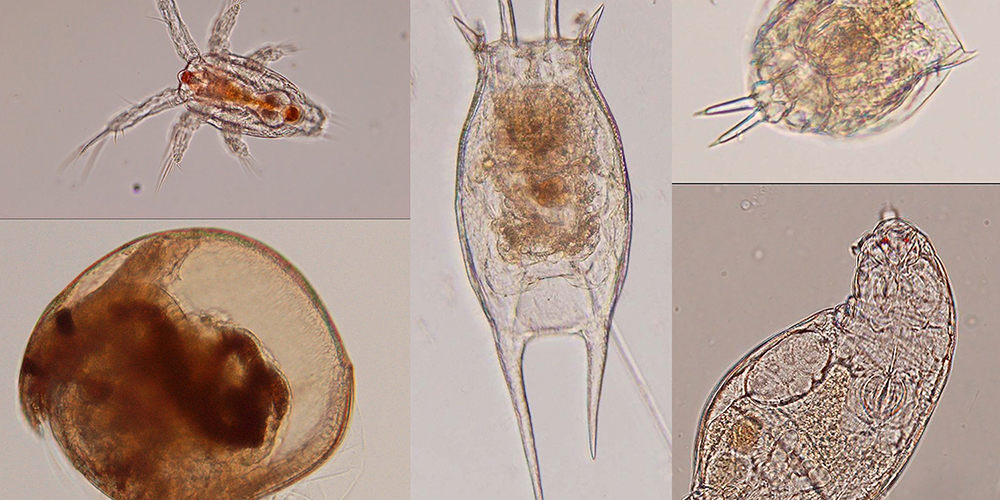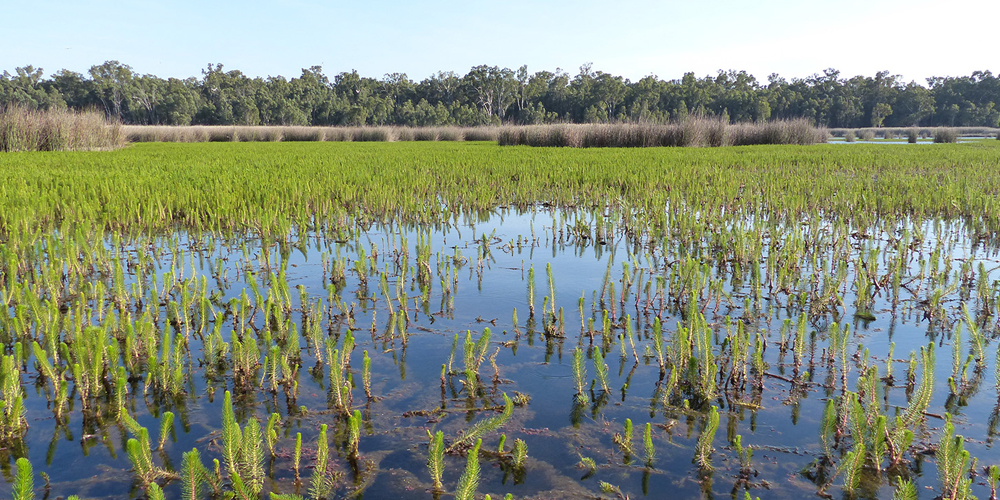
Theme Coordinator: Paul McInerney
Food webs are fundamental to ecosystem function and describe ‘what-eats-what’ within ecological communities. Past research has focused on understanding the contribution and importance of different carbon sources to food webs, with less attention given to determining the quality of food resources, and the dominant pathways for energy to reach the top of the food chain; which in Murray-Darling Basin freshwater environments are ultimately fish and waterbirds. Understanding which food resources support food webs and the dominant factors that influence their availability to consumers, is central to improving our ability to measure ecosystem health.
The EWKR food web theme focussed on improving our understanding of how environmental flows can be used to better support food webs. We used a combination of small outdoor experimental systems (mesocosms), along with river-scale and Murray-Darling Basin-wide research programs to address gaps in our knowledge. Information generated from our research program was then integrated into a model that can be developed to help predict ecological outcomes of environmental flows.
Key outcomes:
Our research showed that quality and quantity of food resources for fish varied among different floodplain habitats in response to flow variability. We found that riverine floodplains support the generation of high concentrations of high quality food resources for consumers. The concentration of some essential nutrients necessary for survival and growth of consumers were found in higher concentrations in the water column of wetlands and anabranches than in the river channel.
For additional notes on each key outcome below, please refer to the respective section numbers within the full report (provided further along this page).
- The quality and quantity of food resources for consumers such as fish vary considerably among habitats and through time in response to flow variability (Section 2.1.3)
- Floodplains support the generation of high concentrations of high quality food resources for consumers. The concentration of some essential fatty acids necessary for survival and growth of consumers were found in higher concentrations in the water column of wetlands and anabranches than in the river channel (Section 2.3.3)
- While the importance of floodplain inundation is well known, our work suggests that reconnection of floodplain habitats to the main channel following the initial inundation may comprise an important management application. Floodplain river connectivity is important to: 1) mobilise high quality food resources to the main channel; and 2) to afford riverine consumers the opportunity to access to high quality resources by moving onto the floodplain. (Section 2.2.2)
- We show that hydrology can regulate basal of the food web by encouraging the growth of green algae and providing resources of high quality. Food quality is transferred through the food web and determines the response of higher order consumers, ultimately regulating the success of fish recruitment (Section 2.3.3 , Section 2.4.3)
- By targeting shifts in diet composition and producer quality, watering events can be designed to disproportionately benefit fish. Green algae have the potential for high production rates and can contribute a large proportion of the energy used by fish. For example, by focussing environmental watering activities on locations with food webs that are primarily fuelled by green algae in place of DOC, it may be possible to generate higher fish biomass (Section 2.4.3 , Section 2.6.3)

To download the full report, click the button below.



